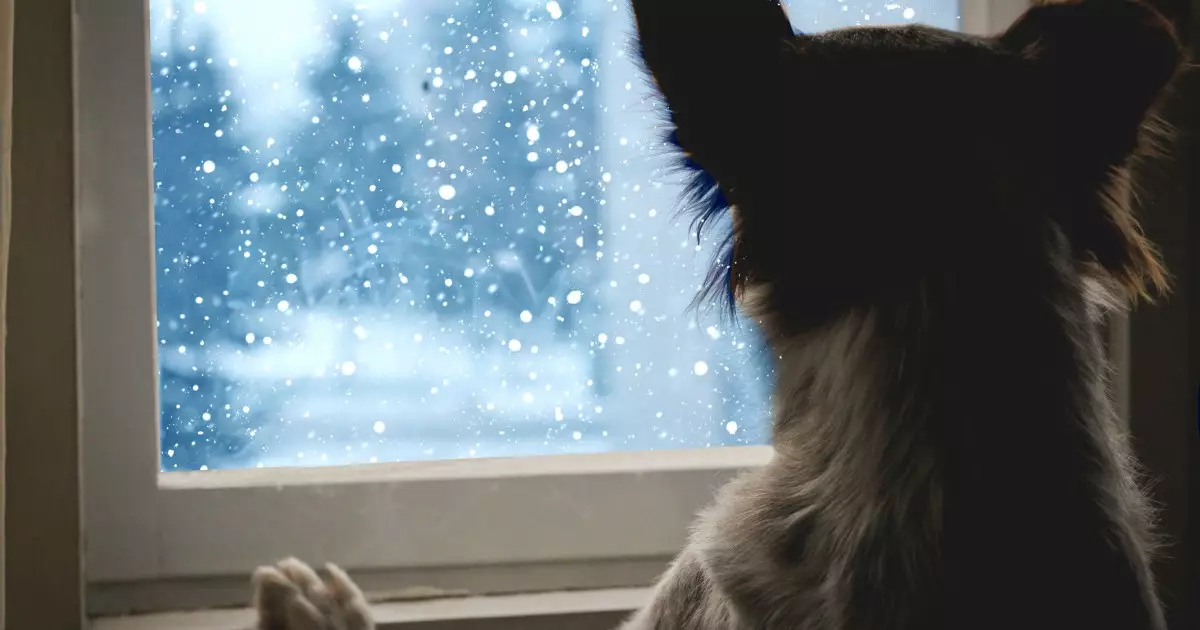As winter unfolds its cold blanket, dog owners often face a unique conundrum: while some dogs seem to thrive in frigid temperatures, eagerly bounding through the snow, others exhibit clear signs of chill-induced reluctance, especially smaller breeds like Chihuahuas. The reality is, not every furry friend is geared for outdoor escapades when temperatures plummet. However, the good news is that winter doesn’t have to stifle playtime and bonding opportunities between you and your pup. Instead, it can prompt creativity in discovering engaging indoor activities that keep tails wagging and hearts happy.
One of the most enriching ways to spend time with your dog indoors is through training sessions focused on teaching new tricks. Dogs, irrespective of age, relish mental stimulation, and training can significantly alleviate pent-up energy, making it an effective tool for keeping your dog physically and cognitively engaged. When setting out to teach your dog, you might begin by refreshing basic commands, gradually introducing more complex tricks as your dog progresses. This not only sharpens their skills but also strengthens the bond of trust and communication between the two of you.
Keeping training sessions short and infused with positive reinforcement—like treats and praise—will ensure your dog remains enthusiastic throughout the winter months.
If your living space accommodates it, consider adapting the classic game of fetch for indoor play. Before you throw that ball, however, take a moment to assess your surroundings. Is your dog’s size appropriate for the space? Are there fragile items that could easily be knocked over? A carpeted area is ideal because it provides traction, reducing the risk of slips and spills. Start small, tossing the ball only a short distance to gauge how your dog navigates the indoor play zone. This modified version of fetch can be particularly enjoyable for smaller breeds, showcasing their agility in confined spaces.
Another classic game that can be adapted for indoor fun is hide-and-seek. Dogs naturally possess keen senses, and challenging them to locate hidden treats or toys can harness those instincts while being incredibly stimulating. Begin by showing your dog the object being hidden; then, place it in an easy-to-find spot while they’re distracted. As your dog becomes more adept at the game, you can progressively increase the difficulty, hiding items in more obscure locations. Besides being a great source of entertainment, this activity strengthens their problem-solving skills and adds an exciting twist to their day.
If you’re looking for a physical challenge, why not convert your living room into an obstacle course? Use everyday furniture and items like cushions, boxes, and chairs to design a playful path for your dog. Set up a series of jumps, tunnels, and climbing spots, rewarding your pup with treats as they navigate through the improvised course. This not only provides rigorous physical exercise but also fuels their adventurous spirit, ensuring that they remain active even when the weather outside is frightful.
For additional interaction, try a follow-the-leader game within the confines of your home. Whether you’re walking, crawling, or making playful gestures, your dog will have a blast following your lead. As they trot behind you, encourage them to be active by incorporating movement up and down stairs or around furniture. This activity allows both you and your dog to get some physical exercise while enhancing your sense of teamwork and playfulness.
Ultimately, the possibilities for indoor activities are only limited by your imagination. Whether you opt for traditional games like tug-of-war, inventive training sessions, or elaborate obstacle courses, the key is to maintain an environment that fosters engagement and fun. With creativity and enthusiasm, you can ensure that winter days spent indoors become cherished memories filled with laughter and love. Before long, you might find that your indoor activities are just as rewarding as ventures out into the cold, keeping your bond strong until the warmer months return.

